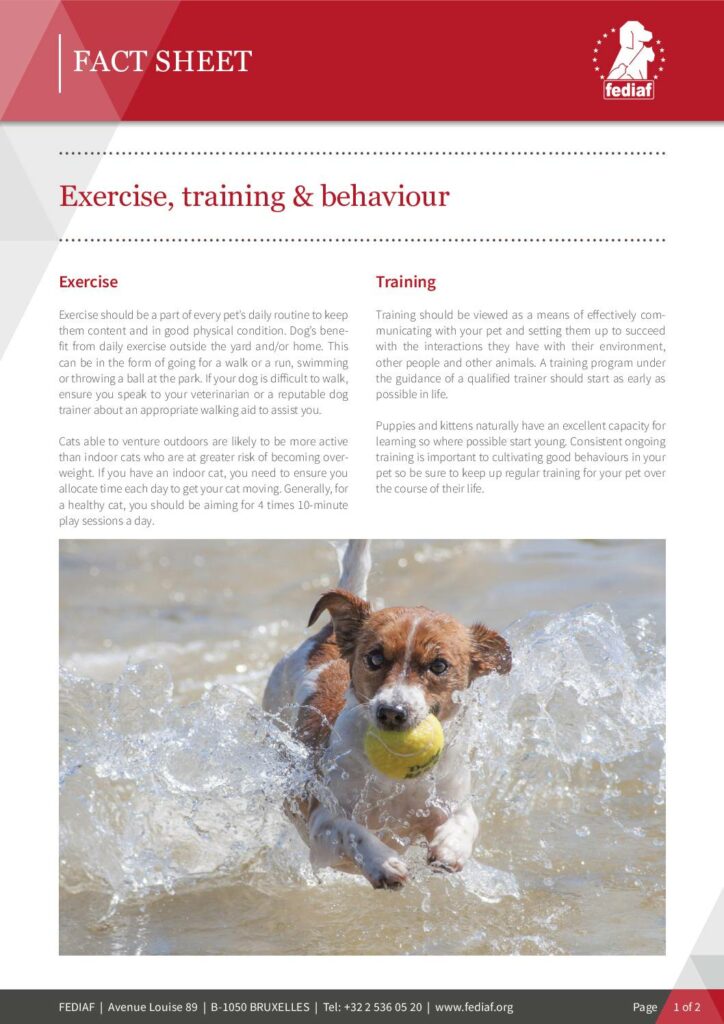Exercise
Exercise should be a part of every pet’s daily routine to keep them content and in good physical condition. Dogs benefit from daily exercise outside the yard and/or home. This can be in the form of going for a walk or a run, swimming or throwing a ball at the park. If your dog is difficult to walk, ensure you speak to your veterinarian or a reputable dog trainer about an appropriate walking aid to assist you.
Cats able to venture outdoors are likely to be more active than indoor cats who are at greater risk of becoming overweight. If you have an indoor cat, you need to ensure you allocate time each day to get your cat moving. Generally, for a healthy cat, you should be aiming for 4 times 10-minute play sessions a day.
Training
Training should be viewed as a means of effectively communicating with your pet and setting them up to succeed with the interactions they have with their environment, other people and other animals. A training program under the guidance of a qualified trainer should start as early as possible in life.
Puppies and kittens naturally have an excellent capacity for learning so where possible start young. Consistent ongoing training is important to cultivating good behaviours in your pet so be sure to keep up regular training for your pet over the course of their life.
Behaviour
In addition to exercise, mental stimulation of pets is important to keep them content. Enrichment is a means of encouraging your cat or dog to display their natural behaviours. Providing environmental enrichment can help provide mental stimulation for your pet and also promotes exercise.
Many interactive toys exist for cats and dogs to keep them entertained. An example of an interactive toy would be the use of an interactive feeder or food dispensing toy to help encourage your pet’s natural feeding behaviours. These toys can help keep your pet busy for hours! Both dogs and cats are natural scavengers and enjoy searching for their food; many toys exist that hide food and encourage your dog to search or work for their meal. Any food given in the puzzle feeder should be taken from your pet’s daily food ration to avoid overfeeding.
In addition to enriching their environment through feeding, take some time to consider the layout of your pet’s environment. For example, cats enjoy being up high, able to survey their surroundings. Ensure you provide plenty of perches for them to climb onto to encourage this natural behaviour.
A combination of daily exercise, environmental enrichment and consistent training can help to reduce behavioural problems in pets. Many behavioural issues in pets stem from stress and anxiety. It is important to recognise that stress in pets is very common and many things exist in their environment that may seem benign to us but can cause them considerable stress. Some examples include:
- New or existing pets
- Children
- Visits to the veterinarian
- Travelling in the car
- Thunderstorms and fireworks
If you suspect your pet may have anxiety or is exhibiting a behavioural problem, it is important to address this as early as possible and speak with your veterinarian about a management plan.
